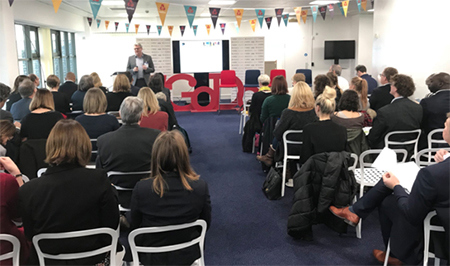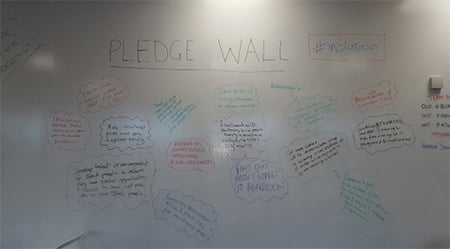Frankly, the results make bleak reading. While we usher in the era of big data, automation and the internet of things, there is a 11% gender pay gap, ethnic minority IT workers find it far more difficult to find permanent work than non-ethnic peers and disabled people are underrepresented in the IT workforce by almost 3x.
This is not good enough and is a depressing counterpoint for an industry that is front and centre in so many ways. However, the aim of the report is not just to put a spotlight on problems, but to sound a clarion call for each and every one of us to make changes that will usher in a more diverse and inclusive tech world. The recent release of the BCS Diversity in IT Report showed that so many of us are ready to answer that call.

The launch event offered up a multitude of interesting views, comments and thoughts about diversity and inclusion. Throughout, two main themes seemed to appear; the importance of nuance and the need for everyone to get on board to successfully promote a more inclusive workforce.
Taking a nuanced approach to diversity is key to ensuring that certain groups are not overlooked and for understanding the links between diversity and the wider range of societal issues around it. While the report is fantastic in collating and analysing data on a range of diversity issues; gender, age, ethnic background and disability, you can always look deeper still.
One illustration of this from the launch was a speaker who talked about the oft-hidden role of conditions like Aspergers in relation to disability, the difficulties it creates during job applications and the limitations it can place on allowing talented people to display this during interview. I had never previously considered the relationship between autism and creating interview structures that allow autistic people to shine, but it’s clearly another area where proactive diversity measures can make things fairer.
The Mayor of Bristol, Marvin Rees, outlined some of the cross-cutting issues that influence diversity, such as social mobility, which is an area that BCS will be working on in greater detail during the early part of 2018. For example, many people from deprived areas will have undoubted skills without this being formally shown via qualifications. Giving people the opportunity to use these skills in employment is the sort of wider issue that, if addressed, will help to break down some of barriers that has made change in IT so sclerotic.
There is a danger of painting in broad brush strokes when it comes to diversity and a number of attendees at the launch mentioned the danger of appropriating blame towards the white, middle aged and middle-class men who make up a significant part of the IT workforce. Far from this, every speaker outlined that only through getting everyone on board can diversity and inclusion be pushed forward at the rate it needs to be.
To that end, at the launch event we set up a pledge wall and asked every person in attendance to write one thing they were going to put into action to foster greater diversity and inclusion, some of which are captured in the picture below.

The response to the release of the report has been heartening, but the concerns it highlights remain. Ultimately, it is all for naught unless we harness the disappointing statistics within it to achieve a tangibly better tech world. While I am not asking you to write it down on a wall like above, I hope if one thing comes out of reading this blog, it’s that every one of us has another look at the report and makes a mental pledge to do a little more in the weeks to come.
Creating a diverse and inclusive workplace gets the best out of people and when you get the best out of people, you get the best out of your organisation. It’s now up to all of us to do our part to deliver this.












